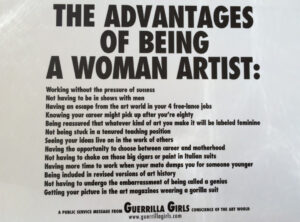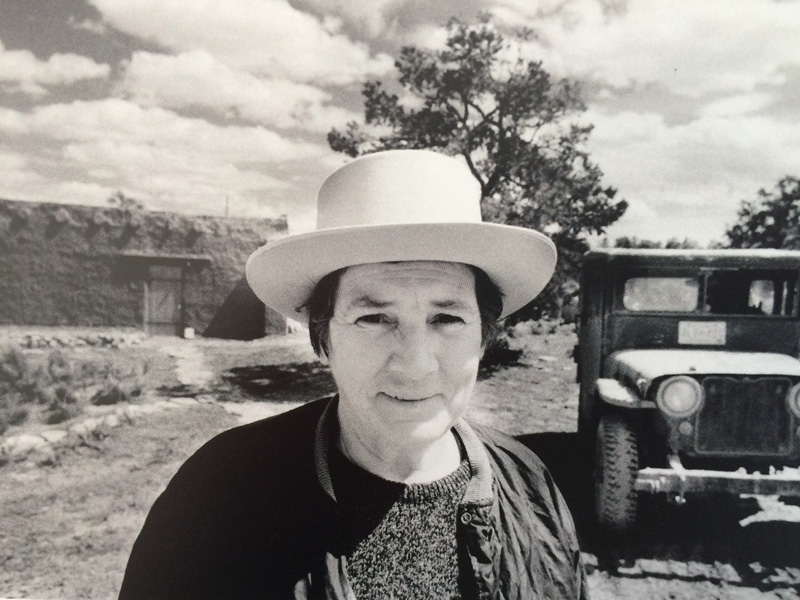Women artists at Tate Modern
It is 30 years since the campaign group Guerrilla Girls launched amid a flurry of feminism, fur, direct action and razor sharp statistics on the gender inequalities in the art world. In London this year, I wonder whether there is finally some attempt to redress the balance.
Women artists are at the heart of the Tate exhibition programme this year – at Tate Modern, Agnes Martin and Sonia Delauney and Barbara Hepworth at Tate Britain.

As I browsed the Tate Modern book shop today I noticed art critic Brian Sewell’s autobiography nestling amongst the half-price sale items and was reminded of his comment, ‘There has never been a first-rank woman artist. Only men are capable of aesthetic greatness.’
If Sewell’s inane assertion is worthy of a riposte, then it is writ large on the walls of Tate Modern now. The juxtaposition of the cool contemplation of Agnes Martin with the expressive, dynamic colour of Delauney is not only testament to a thoughtful curation programme at Tate, but to a breadth of artistic thought and experience from two very different women.
Delauney’s paintings, textiles, fashion and costume designs and prints scream optimism, joy in geometric forms, boldness in colour and modernist sensibilities. Her life as an artist, designer and business woman was populated by poets, dancers, dadaists and artists with whom she collaborates, thinks and shares philosophies.
In contrast, Agnes Martin’s sublime canvases are singular and beckon you to sit, be still and look. In the same way I always feel healthy after eating sushi, Martin’s work is like a detox for your eyes and, if you look long enough, your mind. Early in her career she embraces surrealism – some Miro and I think some Arshile Gorky here – and the paintings that follow, while visually very bare on the surface, retain the essence of an art which is less about depiction and more about self-reflection.
While geometry was a way to experiment with colour for Delauney – this is the woman who made her first child’s cot cover as a modernist abstract – but for Martin it seems to offer order, pace and a mechanism which allowed the making to become a transcendent experience. Agnes Martin had schizophrenia; anyone who’s ever felt overwhelmed by feelings or life’s experiences, might recognise how the processes she employs could provide a welcome and needed structure.

If you can get to London I urge you to go and see both these exhibitions. Congratulations to Tate for a fantastic programme. And as it’s sale time, don’t forget you can buy Brian Sewell’s book at discount – or maybe just discount his book.

Comments